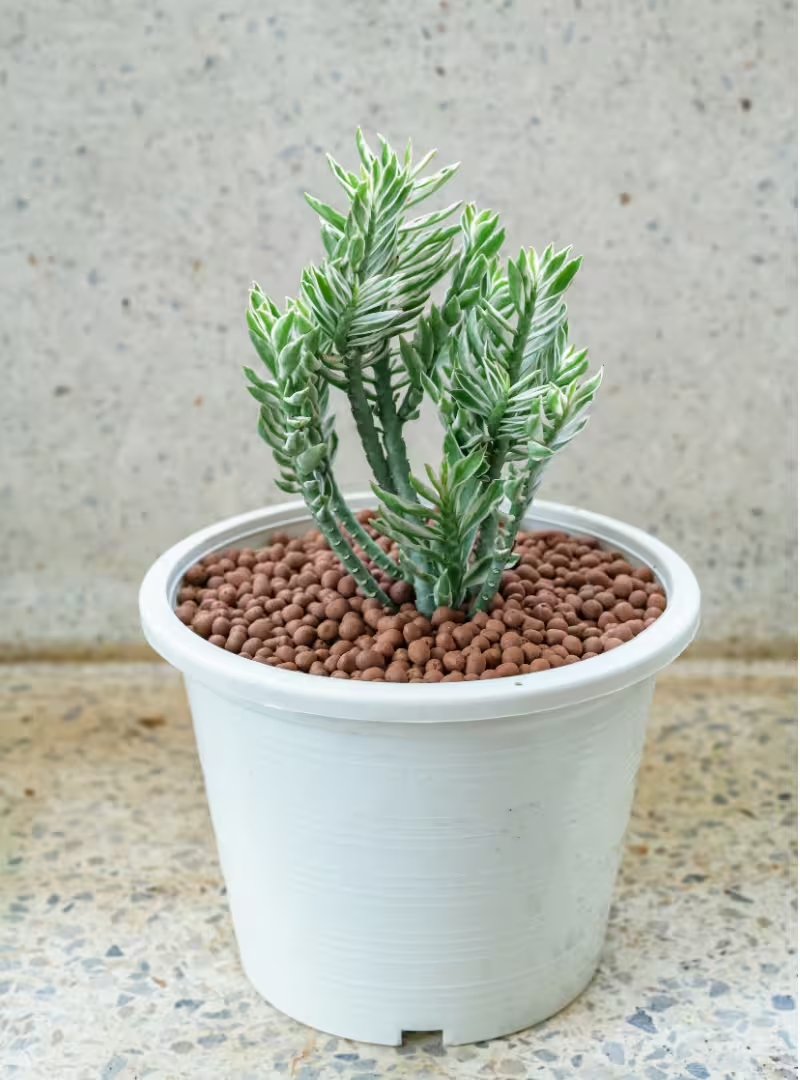The Ultimate Goldfish Care Encyclopedia
Discover everything about goldfish - from the classic Common Goldfish to the exotic Bubble Eye varieties. This definitive guide covers all types with detailed care instructions, tank requirements, disease prevention, and breeding tips to help you become an expert goldfish keeper.
4-14 inches
Size Range (Depending on Type)
65-72°F (18-22°C)
Ideal Water Temperature
10-30 years
Lifespan Potential
20-75+ gallons
Tank Size Requirements
Complete Goldfish Variety Guide
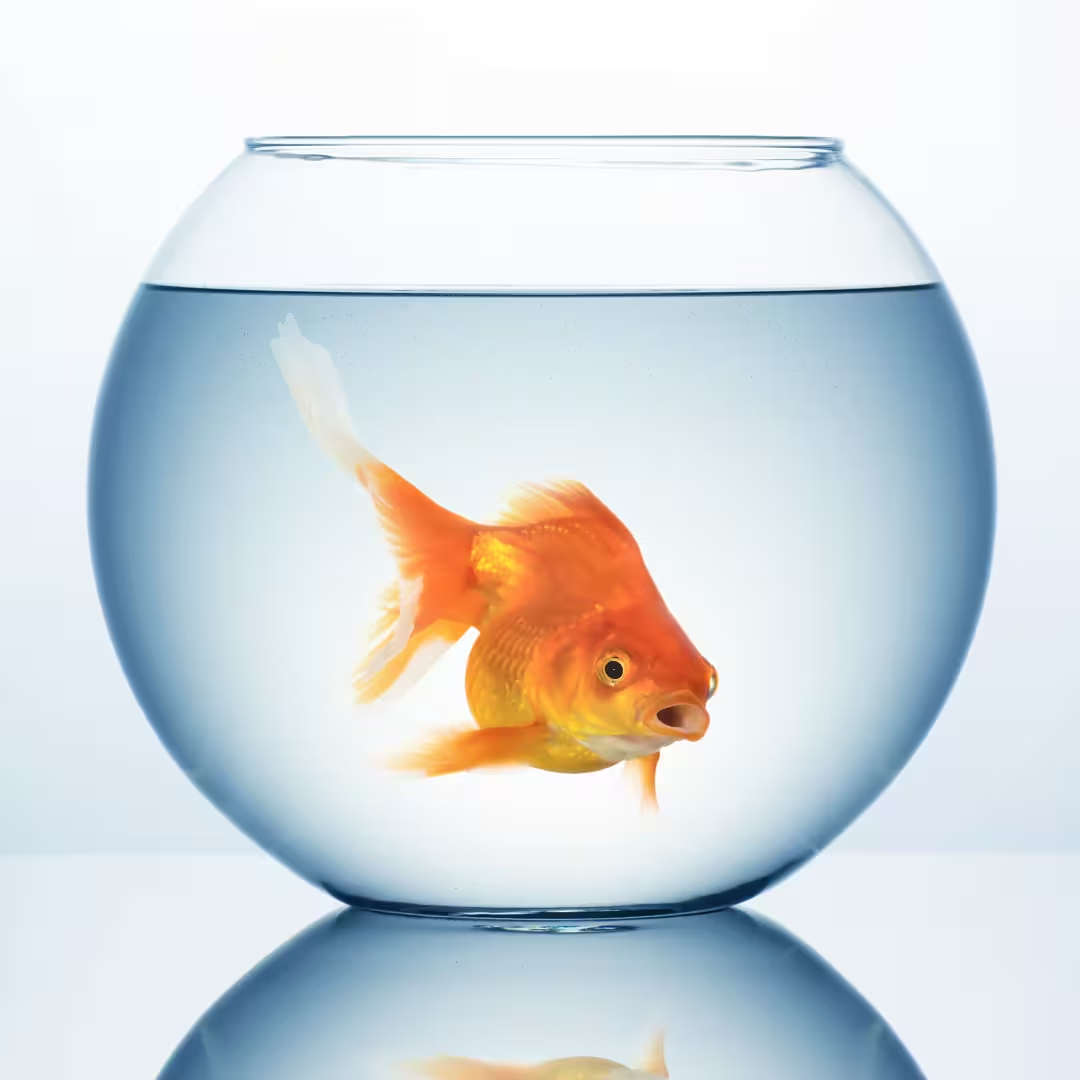
Common Goldfish
Carassius auratusThe classic orange/red goldfish with a slim body and single tail. Extremely hardy and active swimmers that can grow up to 14 inches in proper conditions.
Tank Size: 30+ gallons
Hardiness: Very hardy
Special Needs: None
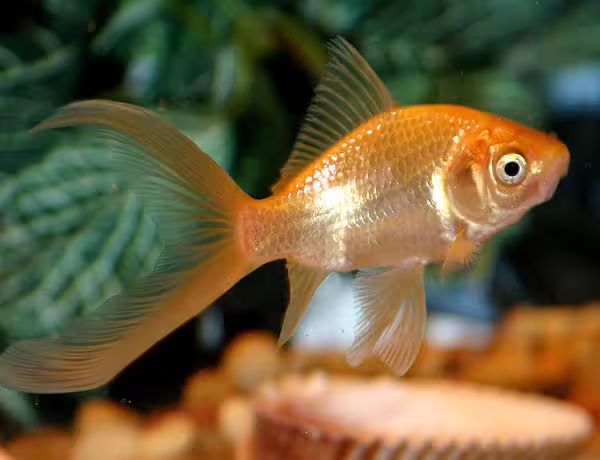
Comet Goldfish
Carassius auratusSimilar to Common goldfish but with longer, flowing tail fins. Fast swimmers that do well in ponds. Available in red, orange, yellow, and white colors.
Tank Size: 40+ gallons
Hardiness: Very hardy
Special Needs: Space to swim
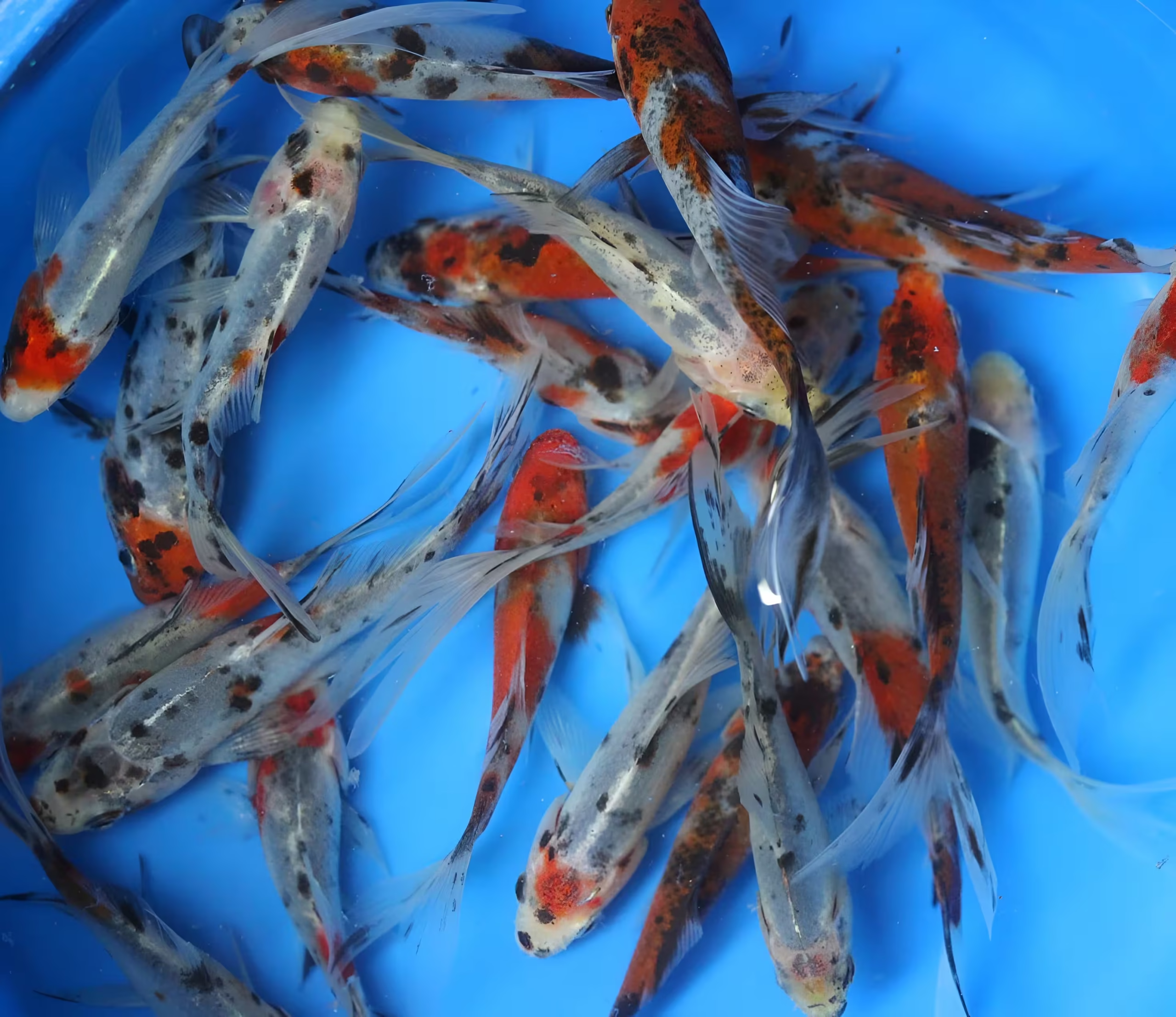
Shubunkin
Carassius auratusCalico patterned goldfish with a mix of blue, red, black, and white spots. Single tail with nacreous (pearly) scales that create a beautiful shimmer.
Tank Size: 30+ gallons
Hardiness: Very hardy
Special Needs: None

Fantail
Carassius auratusThe basic fancy goldfish with a short, egg-shaped body and split tail fin. Available in many colors including red, orange, calico, and chocolate.
Tank Size: 20+ gallons
Hardiness: Moderate
Special Needs: Gentle filtration
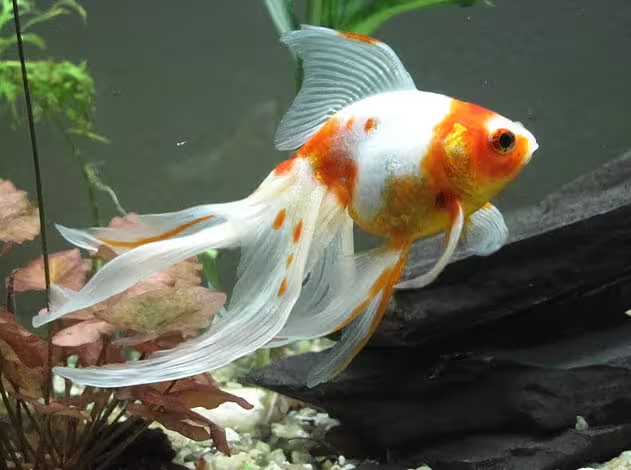
Veiltail
Carassius auratusKnown for its extremely long, flowing fins that trail behind it like a veil. The tail should be at least 3/4 the length of the body when fully grown.
Tank Size: 30+ gallons
Hardiness: Delicate
Special Needs: No sharp decor
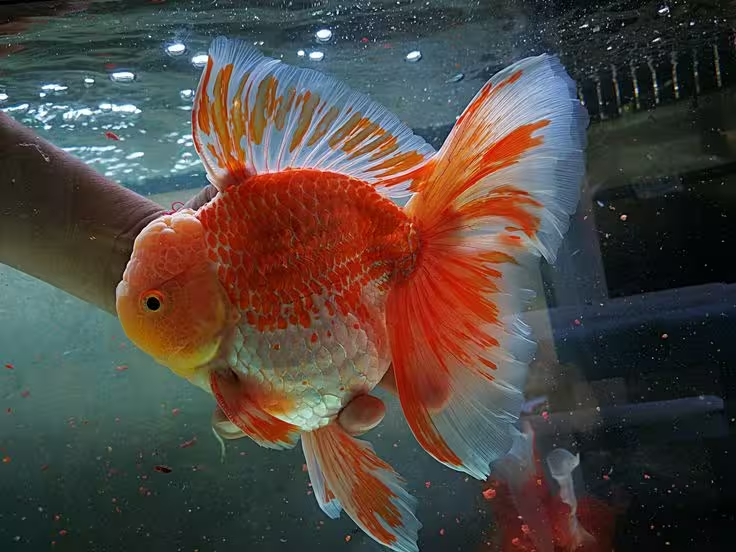
Oranda
Carassius auratusCharacterized by the prominent "wen" (head growth) that develops as they mature. The wen should be evenly distributed and not impair vision.
Tank Size: 30+ gallons
Hardiness: Moderate
Special Needs: Wen care

Ryukin
Carassius auratusDistinguished by a high dorsal hump that begins behind the head. Short, deep body with a long, flowing tail. Available in many color variations.
Tank Size: 30+ gallons
Hardiness: Moderate
Special Needs: Balanced diet
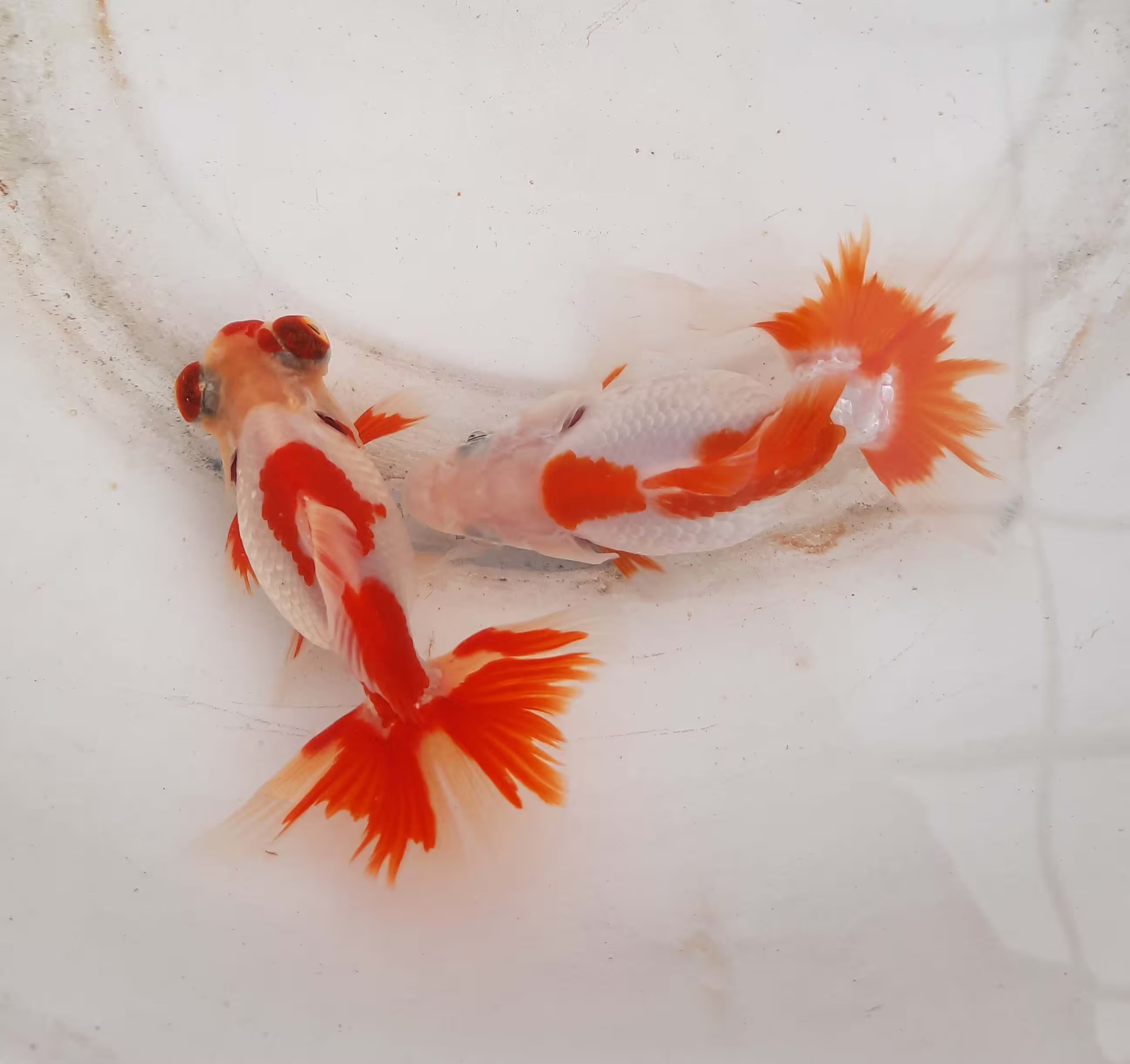
Tosakin
Carassius auratusA rare Japanese variety with a unique tail that spreads horizontally like a fan. The tail should curl under at the edges when viewed from above.
Tank Size: 20+ gallons
Hardiness: Delicate
Special Needs: Shallow tank
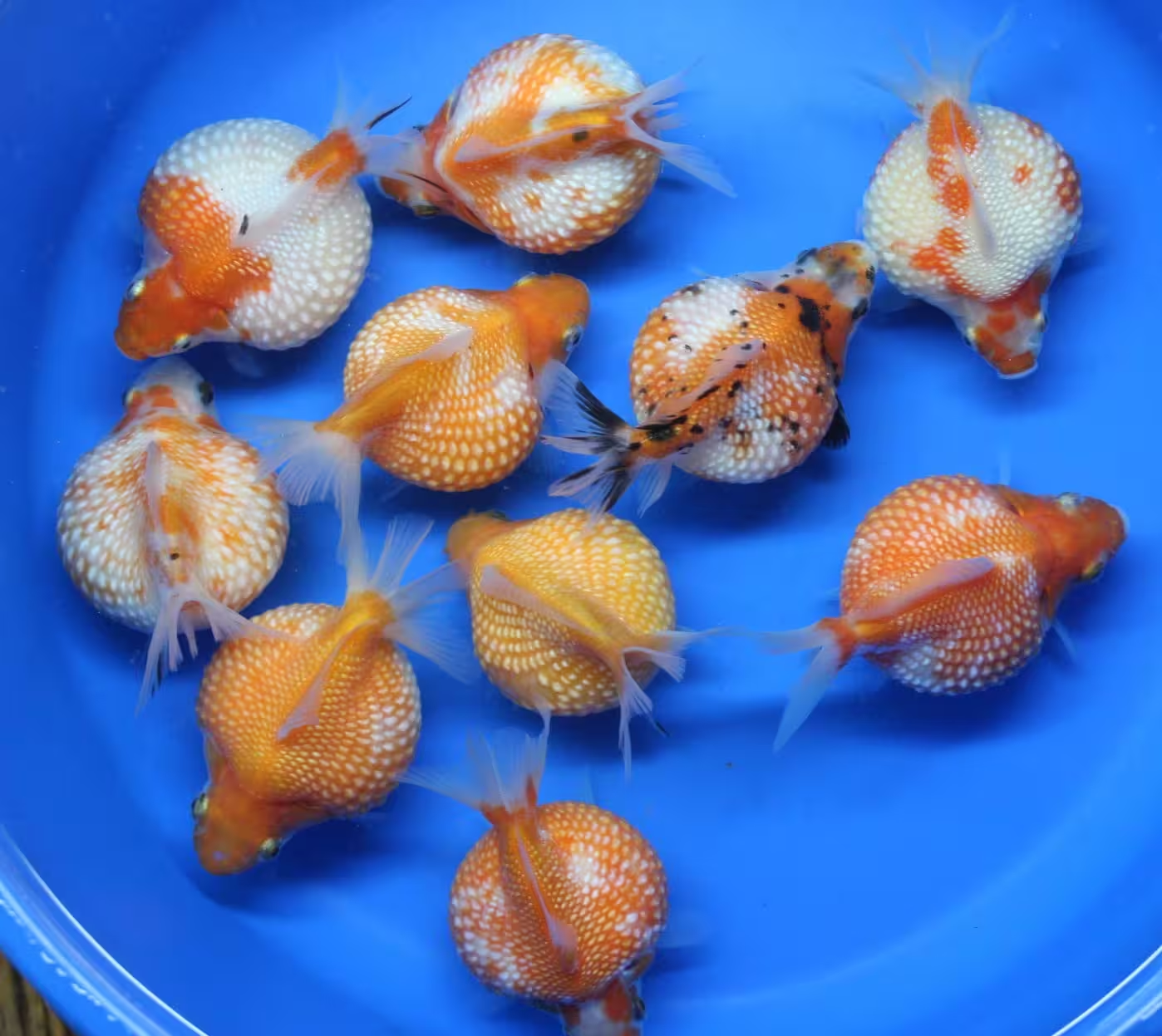
Pearlscale
Carassius auratusKnown for its thick, pearl-like scales that protrude from the body. Extremely round body shape resembling a golf ball when viewed from above.
Tank Size: 20+ gallons
Hardiness: Delicate
Special Needs: Scale protection
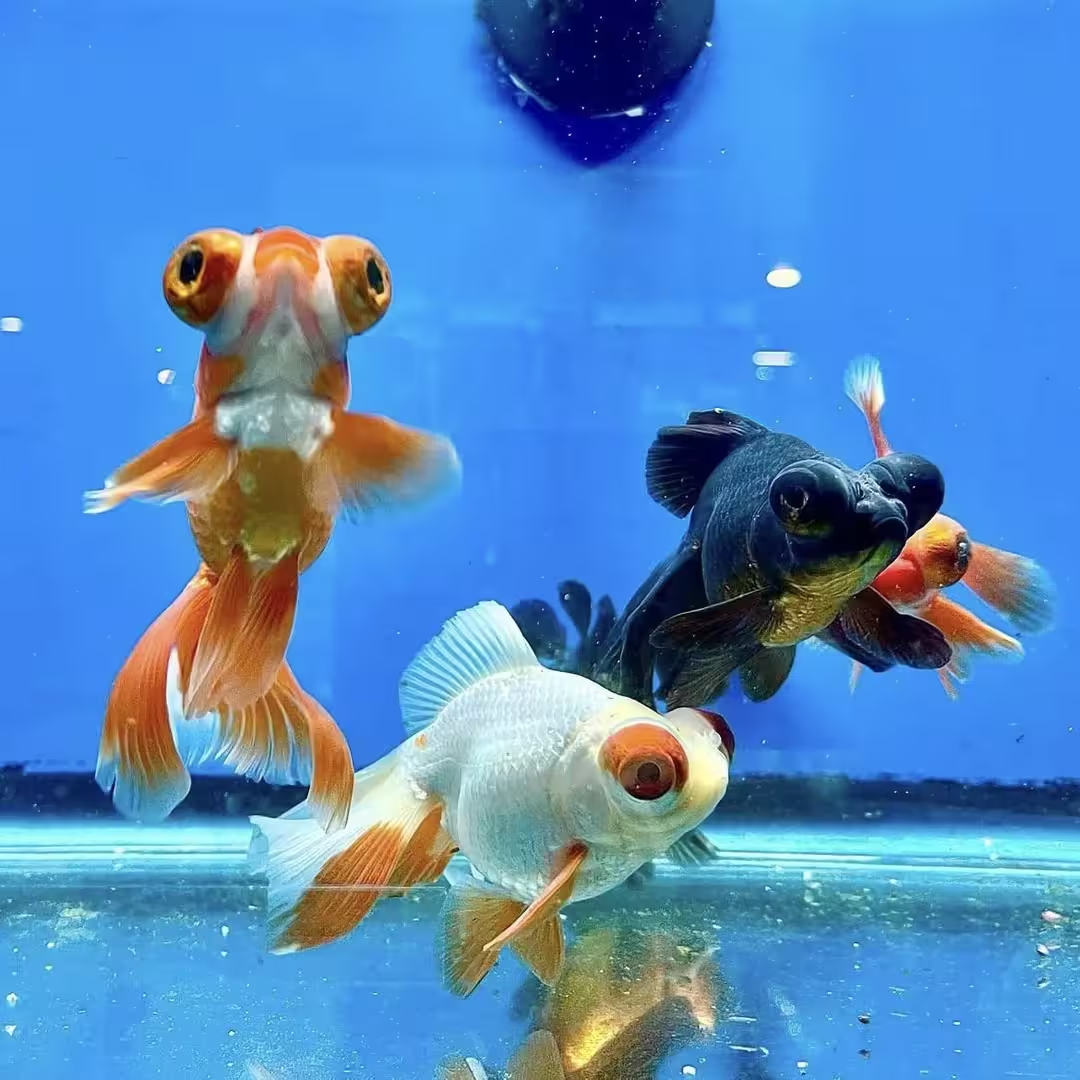
Telescope
Carassius auratusCharacterized by protruding eyes that develop as the fish matures. Eyes should be symmetrical and equally sized. Also called "Dragon Eye" goldfish.
Tank Size: 30+ gallons
Hardiness: Moderate
Special Needs: Eye protection

Black Moor
Carassius auratusA telescope-eye variety that is solid black in color. The black coloration may fade to gray with age. Eyes should be equally sized and symmetrical.
Tank Size: 30+ gallons
Hardiness: Moderate
Special Needs: Eye protection
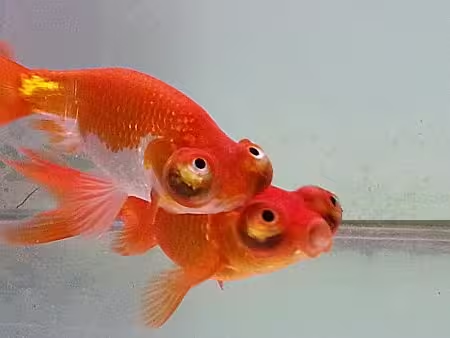
Celestial Eye
Carassius auratusUnique variety with upward-pointing eyes and no dorsal fin. Eyes should be equally sized and perfectly aligned. Requires special care due to poor vision.
Tank Size: 20+ gallons
Hardiness: Delicate
Special Needs: No sharp decor

Bubble Eye
Carassius auratusKnown for the fluid-filled sacs under its eyes. The bubbles are delicate and can burst, though they will regenerate. No dorsal fin and upward-gazing eyes.
Tank Size: 20+ gallons
Hardiness: Very delicate
Special Needs: Bubble protection
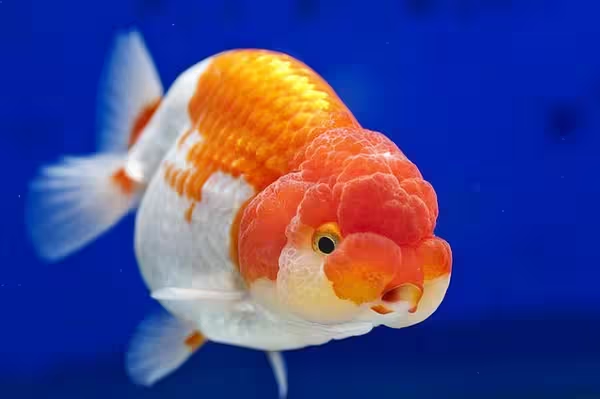
Ranchu
Carassius auratusThe "king of goldfish" with a rounded body, no dorsal fin, and a thick head growth. The back should curve smoothly from head to tail without angles.
Tank Size: 20+ gallons
Hardiness: Delicate
Special Needs: Wen care
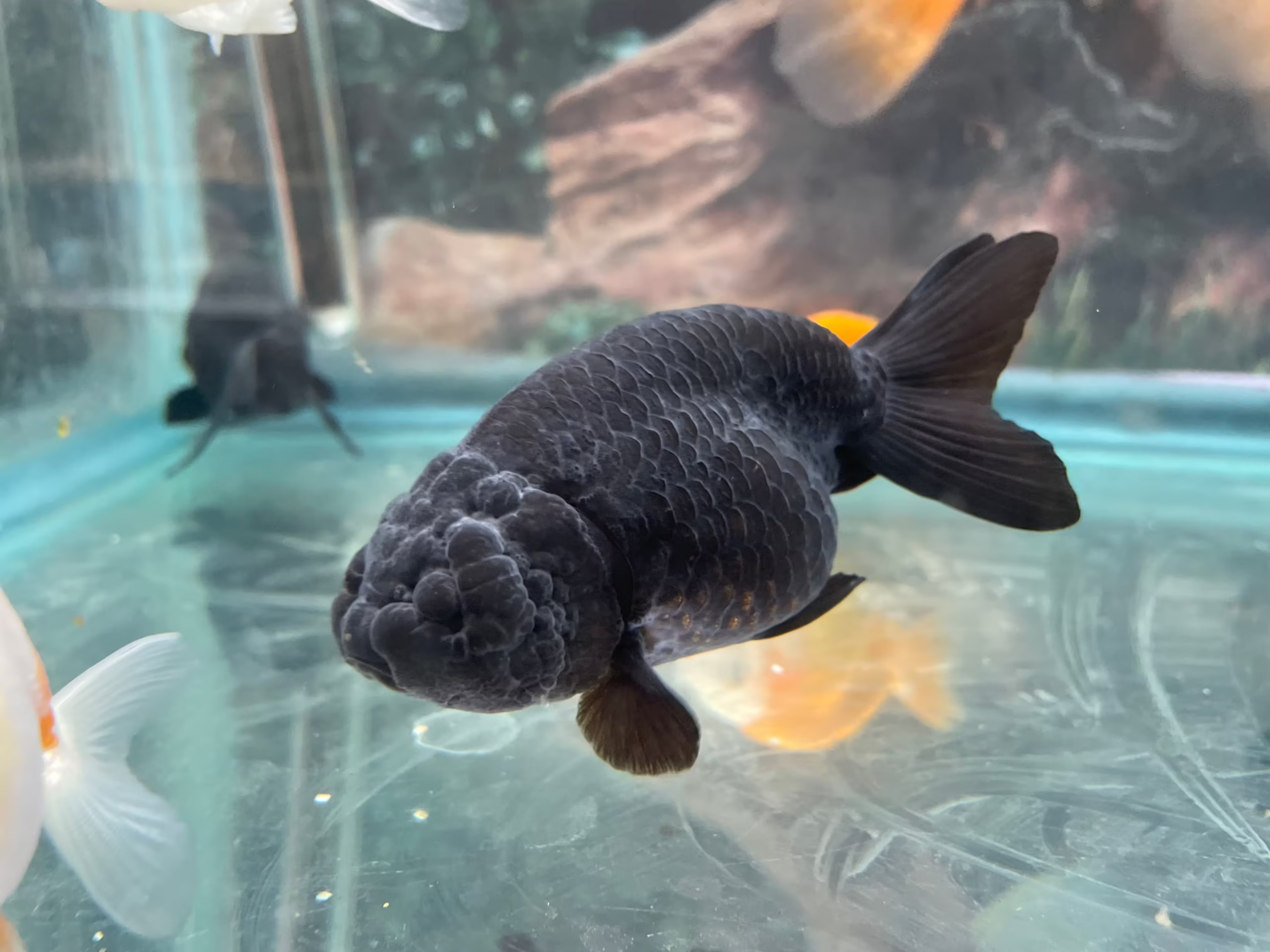
Lionhead
Carassius auratusSimilar to Ranchu but with a slight back curve. The head growth should be well-developed but not impair vision. No dorsal fin and a double tail.
Tank Size: 20+ gallons
Hardiness: Delicate
Special Needs: Wen care
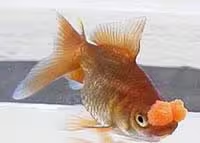
Pompon
Carassius auratusDistinguished by fleshy nasal protrusions that resemble pompons. The pompons should be equally sized and symmetrical. May or may not have a dorsal fin.
Tank Size: 20+ gallons
Hardiness: Moderate
Special Needs: Pompon care
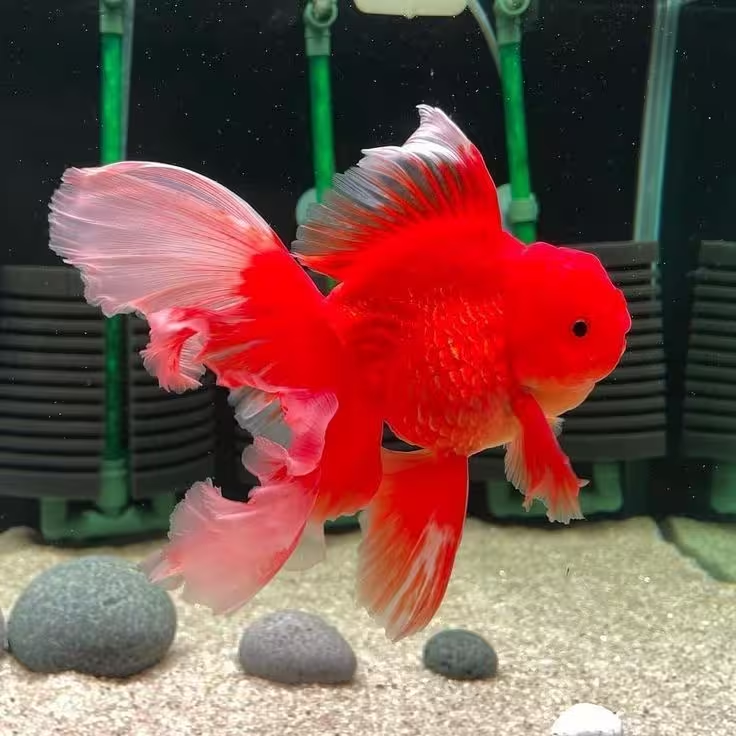
Butterfly Tail
Carassius auratusNamed for its tail that spreads horizontally like butterfly wings when viewed from above. The tail should be symmetrical with rounded edges.
Tank Size: 30+ gallons
Hardiness: Moderate
Special Needs: Shallow tank
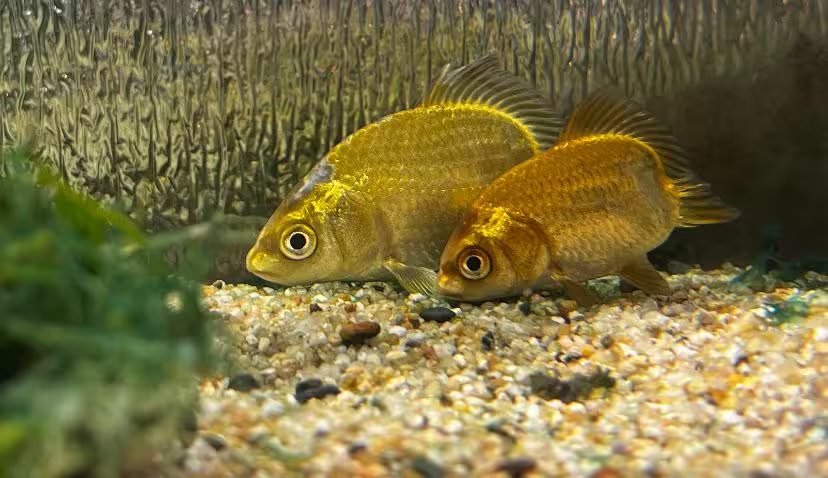
Meteor
Carassius auratusA rare mutation that lacks a tail fin entirely. The body should be rounded and the fish should be able to swim normally despite the missing tail.
Tank Size: 20+ gallons
Hardiness: Very delicate
Special Needs: Gentle currents
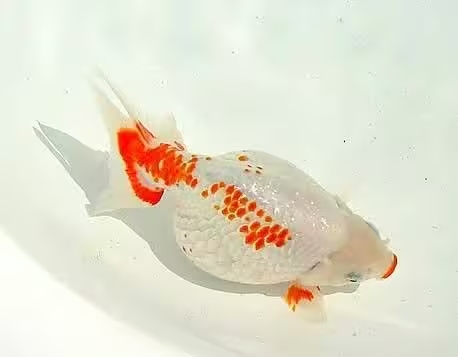
Izumo Nankin
Carassius auratusA rare Japanese breed with red-and-white coloration. The red should cover the head and back, while the belly remains white. No dorsal fin.
Tank Size: 20+ gallons
Hardiness: Delicate
Special Needs: Specialized care
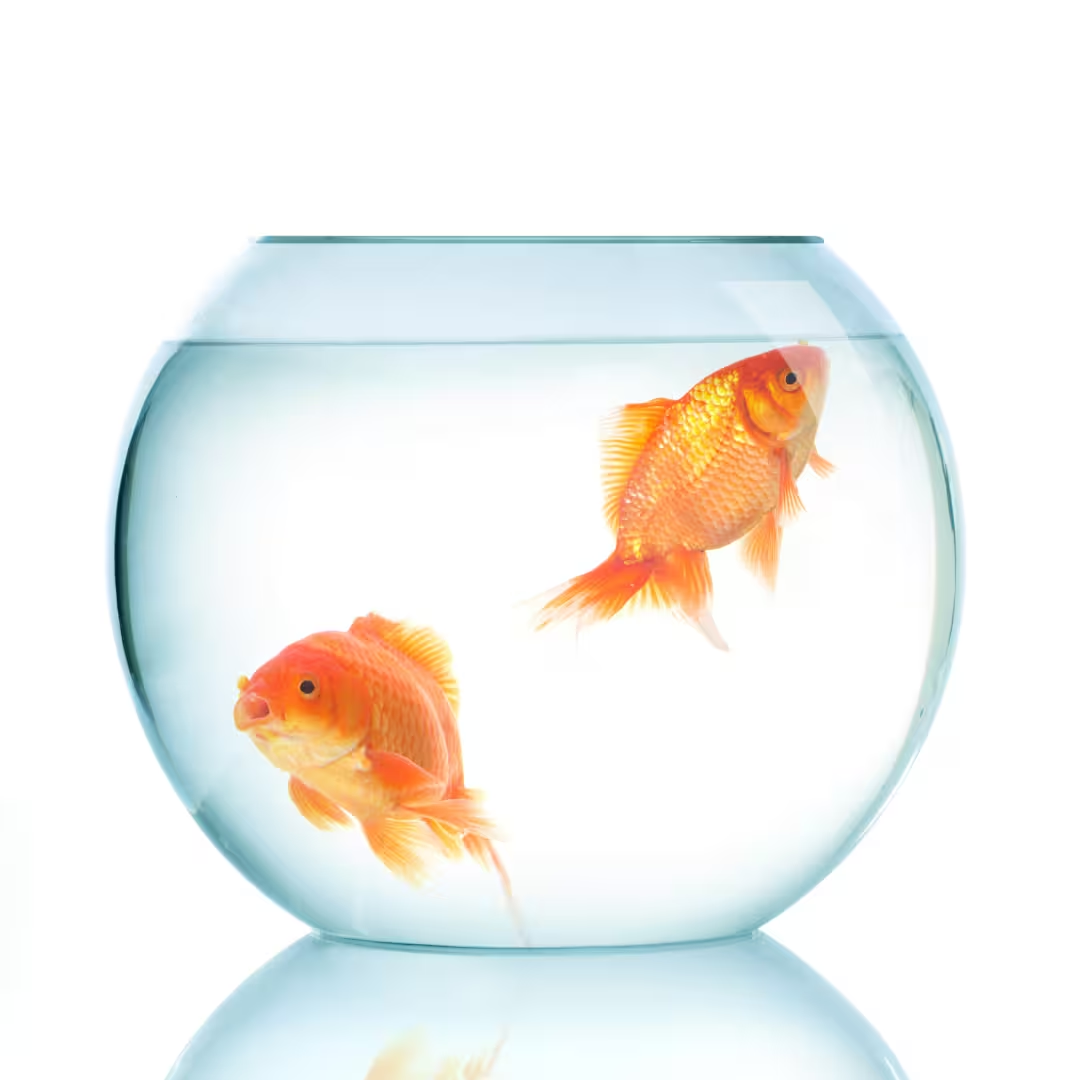
Wakin
Carassius auratusJapanese variety with a slim body but double tail. Transitional type between single-tailed and fancy goldfish. Excellent for ponds.
Tank Size: 30+ gallons
Hardiness: Very hardy
Special Needs: Space to swim

Eggfish
Carassius auratusChinese variety with extreme egg-shape and no dorsal fin. Very delicate and rare. The body should be perfectly oval.
Tank Size: 20+ gallons
Hardiness: Very delicate
Special Needs: Specialized care
Goldfish Type Comparison
| Type | Body Shape | Tail Type | Hardiness | Min Tank Size | Special Features |
|---|---|---|---|---|---|
| Common | Slim, streamlined | Single | Very hardy | 30 gal | Classic orange color |
| Comet | Slim, elongated | Single, long | Very hardy | 40 gal | Flowing tail fins |
| Shubunkin | Slim | Single | Very hardy | 30 gal | Calico coloration |
| Fantail | Egg-shaped | Double | Moderate | 20 gal | Basic fancy type |
| Oranda | Egg-shaped | Double | Moderate | 30 gal | Wen head growth |
| Ryukin | Deep, humped | Double | Moderate | 30 gal | Dorsal hump |
| Telescope | Egg-shaped | Double | Moderate | 30 gal | Protruding eyes |
| Bubble Eye | Egg-shaped | Double | Very delicate | 20 gal | Fluid sacs under eyes |
| Ranchu | Egg-shaped | Double | Delicate | 20 gal | No dorsal fin |
Complete Goldfish Care Guide
Creating the Perfect Goldfish Habitat
Goldfish require specific tank conditions to thrive and reach their full potential:
Tank Size Requirements
- Single-tailed varieties (Common, Comet, Shubunkin): Minimum 30 gallons for first fish + 10 gallons per additional fish
- Fancy varieties (Oranda, Ryukin, Telescope): 20 gallons for first fish + 10 gallons per additional fish
- Delicate varieties (Bubble Eye, Celestial): 20 gallons for one fish, 30+ gallons for multiple
- Note: Larger tanks provide more stable water conditions and room for growth
Filtration System
- Canister filters: Recommended for their superior mechanical and biological filtration
- Filter capacity: Should turnover the tank volume 4-6 times per hour
- Sponge pre-filters: Essential for fancy varieties to protect delicate fins
- Additional filtration: Consider adding a UV sterilizer for disease prevention
Substrate & Decor
- Substrate: Fine sand (0.5-1mm grain) or smooth gravel to prevent injury
- Decorations: Smooth rocks, driftwood with rounded edges
- Plants: Hardy varieties like Anubias, Java Fern (attach to decor, not planted)
- Avoid: Sharp objects, small openings where fish could get stuck
Pro Tip: Tank Shape Matters
For single-tailed varieties (Comets, Commons, Shubunkins), longer tanks are better than tall ones as they provide more swimming space. For fancy varieties, standard rectangular tanks work well. Avoid tall, narrow tanks as they reduce surface area for oxygen exchange.
Optimal Water Conditions for Goldfish
Maintaining pristine water quality is crucial for goldfish health and longevity:
| Parameter | Ideal Range | Danger Zone | Adjustment Methods |
|---|---|---|---|
| Temperature | 65-72°F (18-22°C) | <60°F or >75°F | Aquarium heater/chiller, room temp control |
| pH Level | 7.0-7.8 | <6.5 or >8.5 | Buffering substrates, peat filtration |
| Ammonia | 0 ppm | Any detectable level | Biological filtration, water changes |
| Nitrite | 0 ppm | Any detectable level | Cycled tank, bio-media |
| Nitrate | <20 ppm | >40 ppm | Live plants, water changes |
| GH | 4-20 dGH | <2 or >25 dGH | Mineral additives, RO water |
| KH | 3-8 dKH | <1 or >12 dKH | Baking soda (raise), peat (lower) |
Water Change Schedule
- Weekly: 30-40% water change for established tanks
- Bi-weekly: 50% change if heavily stocked
- New tanks: 20% changes 2-3 times weekly during cycling
- Use: Dechlorinated water matched to tank temperature
Nutrition & Feeding Guide
A balanced diet promotes vibrant colors, proper growth, and overall health:
Staple Diet
- High-quality pellets: Sinking varieties preferred (Hikari Gold, Saki-Hikari)
- Protein content: 30-35% for juveniles, 25-30% for adults
- Feed amount: What they can consume in 2 minutes, 2-3 times daily
- Soak pellets: For 1 minute to prevent swim bladder issues
Supplemental Foods
- Vegetables: Blanched peas (deshelled), zucchini, spinach (2-3 times weekly)
- Live foods: Bloodworms, brine shrimp, daphnia (1-2 times weekly)
- Color enhancers: Spirulina, astaxanthin-containing foods
- Specialty foods: Gel foods for delicate varieties
Foods to Avoid
- Floating foods: Can cause air ingestion leading to swim bladder issues
- Mammalian fats: Beef heart, pork - difficult to digest
- Bread/crackers: Expand in digestive system
- Excessive carbohydrates: Can cause fatty liver disease
Feeding Schedule Example
Morning: High-quality sinking pellets (soaked)
Afternoon: Blanched vegetables or live food
Evening: Specialized formula (color enhancer or growth formula)
Weekly: Fasting day (no food) to prevent constipation
Health Maintenance & Disease Prevention
Goldfish are susceptible to specific health issues that require proactive care:
Swim Bladder Disorder
Symptoms:
- Difficulty maintaining buoyancy
- Floating upside-down or sinking
- Loss of appetite
Treatment:
- Fast for 3 days, then feed cooked deshelled peas
- Lower water level to reduce swimming effort
- Epsom salt bath (1 tsp per gallon for 15 minutes)
- Long-term: Switch to sinking foods, avoid overfeeding
Bacterial Infections
Symptoms:
- Red streaks in fins or body
- Ulcers or open sores
- Cloudy eyes or frayed fins
- Lethargy and loss of appetite
Treatment:
- Broad-spectrum antibiotic (Kanamycin, Erythromycin)
- Increase water temperature to 72-74°F (22-23°C)
- Add aquarium salt (1 tbsp per 5 gallons)
- Improve water quality through frequent changes
- Remove carbon filtration during treatment
Fungal Infections
Symptoms:
- White cotton-like growths on body or fins
- Fuzzy patches on skin or gills
- Reddened areas under fungal growth
Treatment:
- Antifungal medication (Pimafix, Methylene Blue)
- Salt bath (1 tbsp per gallon for 15 minutes daily)
- Increase water changes to improve conditions
- Check for underlying causes (injuries, poor water quality)
Preventive Health Measures
- Quarantine: 4-6 weeks for new fish
- Vaccination: Consider KHV vaccine in endemic areas
- Parasite control: Regular observation and treatment if needed
- Stress reduction: Maintain consistent environment, avoid overcrowding
- Regular checks: Monitor for early signs of disease
First Aid Kit Essentials
Every goldfish keeper should have these basic treatments on hand:
- Aquarium salt
- Broad-spectrum antibiotic (Kanamycin, Tetracycline)
- Antifungal treatment (Methylene Blue, Pimafix)
- Parasite treatment (Praziquantel, Formalin)
- Epsom salt (for swim bladder issues)
- Water test kit (API Master Test Kit recommended)
Goldfish Breeding Guide
Successful breeding requires careful preparation and attention to detail:
Breeder Selection (6-12 months before)
- Choose healthy specimens with desired traits
- Ideal ratio: 2 males per female
- Age: 2-4 years old for best results
- Condition with high-quality foods
Conditioning (4-8 weeks before)
- High-protein diet (bloodworms, brine shrimp)
- Gradual temperature reduction to 60°F (15°C)
- Increase daylight to 14 hours
- Large, frequent water changes
Spawning Setup
- 50-75 gallon tank with spawning mops or plants
- Temperature increase to 68-72°F (20-22°C)
- Gentle aeration, no strong currents
- Flat stones or tiles for egg deposition
Spawning & Fry Care
- Remove adults after spawning to prevent egg eating
- Eggs hatch in 4-7 days at 72°F (22°C)
- Feed fry infusoria, then baby brine shrimp
- Daily 10% water changes after first week
- Separate by size as they grow to prevent cannibalism
Genetic Considerations
When breeding fancy goldfish, approximately 25-30% of fry will show the desired traits. The rest may resemble common goldfish or show mixed characteristics. Selective breeding over generations improves desired traits. Avoid breeding fish with:
- Deformities or asymmetrical features
- Poor swimming ability
- Overly exaggerated features that impair quality of life
- History of genetic diseases
Compatible Tank Mates for Goldfish
While goldfish are peaceful, their specific needs require careful selection of tank companions:
Ideal Companions
- Other goldfish: Same type or similar swimming ability
- White Cloud Mountain Minnows: Coldwater tolerant
- Dojo Loaches: Peaceful bottom dwellers
- Apple Snails: Help clean algae (large enough not to be eaten)
- Bristlenose Plecos: Small, peaceful algae eaters
Species to Avoid
- Tropical fish: Require warmer temperatures
- Aggressive species: Cichlids, larger barbs
- Small, fast fish: May outcompete goldfish for food
- Nippy species: Can damage fins or eyes
- Small invertebrates: May be eaten by goldfish
Community Tank Guidelines
For a harmonious community tank with goldfish:
- Maintain at least 20 gallons per goldfish plus additional space for tank mates
- Choose fish with similar temperature requirements (65-72°F)
- Select peaceful species that won't compete aggressively for food
- Monitor during feeding to ensure all fish get adequate nutrition
- Provide plenty of open swimming space with some sheltered areas
Ready to Start Your Goldfish Journey?
Explore our premium selection of healthy, vibrant goldfish - each hand-selected for quality and vitality. Click below to browse our available varieties or learn more about goldfish care.
Download This Complete Care Guide
Get this comprehensive Goldfish encyclopedia in PDF format for offline reference or printing


